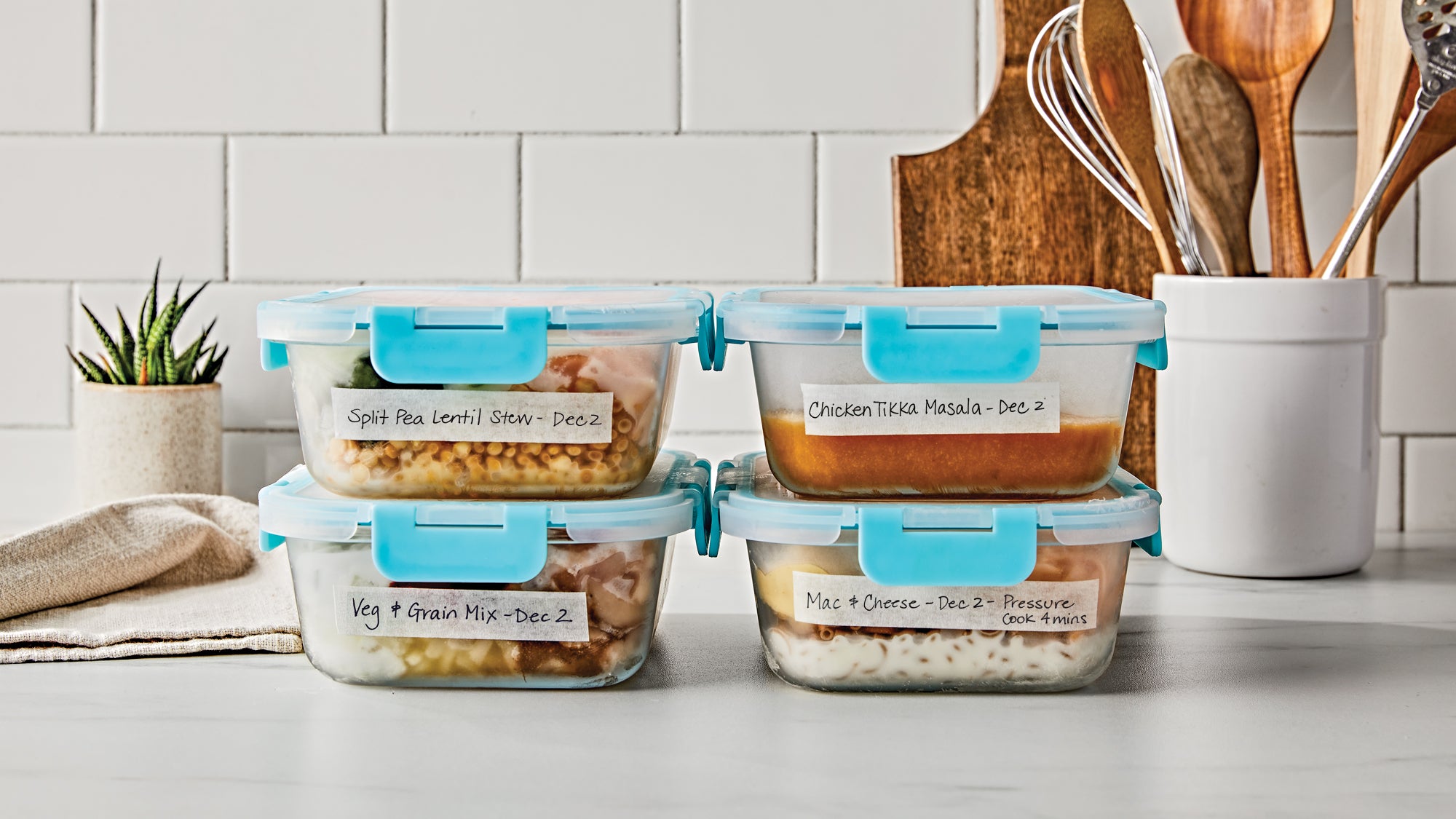100 Ways to Be a Better Cook: Get Schooled in Kitchen Organization 101

(Photo: Maya Visnyei)
16. Avoid clutter
The kitchen is often the hub of a home, which means things can accumulate there. Keep mail, kids’ homework, items for recycling and other clutter from piling up. Carve out a few minutes every day to tidy up.
17. Freeze responsibly
Label containers with the contents and date, and include any special instructions, such as how to reheat. Store like with like to make inventory easier; for example, keep frozen produce in one section, frozen meats in another, prepared meats in another.
18. Cycle through frozen items
At least once a week, go through your freezer and use up items to prevent overcrowding and overbuying.
19. Manage your pantry
Go through the shelves and pull out bags or boxes with just a little bit left, and make plans to use them up (top muffins with those stray oats, for example, or add the last bit of rice to a soup). Create a system so you know where everything is, keeping frequently used items most visible. Older items should also be easily accessible or placed towards the front of your pantry so they get used up before newer products. Invest in clear containers to store items that can get stale, such as crackers, or that can spill, such as dried grains or pasta.
20. Have a go-to pantry meal
“Master at least one recipe that you can make entirely from pantry and freeze staples,” says chef and Clean Eating contributor Sarah Sweeney. “This will help eliminate the urge to order in when your fridge is empty. My go-to is tuna puttanesca, using canned tuna, canned diced tomatoes and olives. I bulk it up with frozen spinach or kale.”
21. Refresh your dried herbs and spices
Dried herbs and spices lose their potency over time; generally one to three years for dried leafy herbs like oregano or basil, two to four years for ground spices like cumin or paprika, and three to four years for whole spices like caraway seeds or allspice berries. If a spice has faded in color and fragrance, it’s likely past its prime.
22. Use up less-popular spices
We all have that jar of something we bought for a recipe and never used again. Find a recipe that utilizes it, or simply add it to neutrally flavored dishes like scrambled eggs or chicken breast.
23. Upgrade small tools
“Invest in simple upgrades that make a big difference,” Hull says. “Replace those old veggie peelers and can openers, or buy a new cutting board.”
24. Speaking of cutting boards…
“A cutting board that slips around can result in inaccurate cutting, and it also poses a safety risk for your fingers next to a sharp knife,” Bench says. “To stabilize your cutting board, place a flattened, damp paper towel under it.”